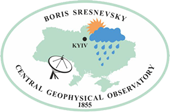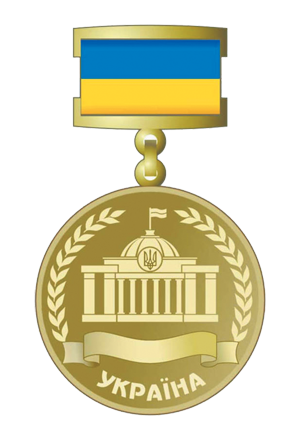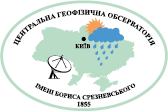M Boryspil

142, Hlybotska St., Boryspil, Boryspil district, 08300, tel. (04595) 6 65 05
| Facebook page of the station: facebook.com/msboryspil |

The Boryspil Meteorological Station of the second category was organized in 1909 at the agricultural school and operated without interruption until September 1941. From 1931 to 1941, the station operated under the first category program - a geophysical observatory with aerological and actinometric observations was transferred here from Kyiv. All other years, the station operated under the category II program.
In May 1942, the German occupiers opened a second-class meteorological station on the territory of the Serp ta Molot collective farm, located 1.5 km west of the former observatory.
In September 1943, during the liberation of Boryspil and the retreat of German troops, the meteorological station's archive and its premises were burned and the instruments taken away. Only a weather vane, a rain gauge, a nephoscope, and a psychrometric booth survived.
The same year, on November 1, the work of the meteorological station was resumed under the second category program by an inspector of the Kharkiv Military District Hydrometeorological Service Department at the same location - on the territory of the Serp ta Molot collective farm. A room was rented for the office space. Until 15.06.1944, observations were carried out using portable instruments. In January 1944, observations of snow cover in the field and on the bare ground began. In April 1951, the weather station was moved to Kotovskoho Street, now 142 Hlybotska Street, where it is located today.
 The station carries out round-the-clock observations of the following meteorological elements: air temperature and humidity, soil surface temperature and at depth, atmospheric pressure, wind direction and speed, precipitation, atmospheric phenomena, including dangerous and natural hydrometeorological phenomena, and the duration of sunlight per day. In winter, the snow cover is monitored both at the meteorological site and on the field route, soil freezing and soil temperature at the level of the tillering node, i.e. 3 cm, are measured.
The station carries out round-the-clock observations of the following meteorological elements: air temperature and humidity, soil surface temperature and at depth, atmospheric pressure, wind direction and speed, precipitation, atmospheric phenomena, including dangerous and natural hydrometeorological phenomena, and the duration of sunlight per day. In winter, the snow cover is monitored both at the meteorological site and on the field route, soil freezing and soil temperature at the level of the tillering node, i.e. 3 cm, are measured.
Since 1958, actinometric observations of solar radiation fluxes have also been carried out. From April 1969 to April 2014, ozonometric observations of the total ozone content in the atmosphere were carried out. In addition, the station conducts radiometric observations of the gamma background.
Agrometeorological observations have been carried out at the station since 1944 under a reduced program (without the position of agrometeorologist), and since 1952 the position of agrometeorological technician was introduced and observations were carried out under the full program. Observations were made on the development of major crops and the impact of weather conditions on them. Based on these observations, forecasts of productive soil moisture reserves at the beginning of the growing season were made, as well as forecasts of grain crops ripening, fruit trees flowering, etc. Unfortunately, these observations stopped in 1997.Boryspil weather station is equipped with the automated program “Meteo” and the necessary electrical sensors: BAR atmospheric pressure meter, MARK-60 wind speed and direction meter, HMP45D temperature and relative humidity converter, TSP 1-8 100P resistance thermocouples on the bare ground (6 pcs.) for measuring soil temperature at depths of 5-20 cm, extractable electrical sensors under natural cover (5 pcs.) for measuring soil temperature at depths of 0.2-3.6 m. The site is also equipped with meteorological instruments that do not require power supply to ensure round-the-clock uninterrupted monitoring in the conditions of stabilization power outages.
On December 5, 2007, an automatic meteorological complex “Troposphere-1” was installed, which includes meters of atmospheric pressure, temperature and humidity, wind direction and speed. The battery included in the Troposphere-1 kit allows the data to be used for up to two hours after the power is turned off.
Meteorologists observe all meteorological variables and the level of radioactive background 8 times a day; actinometric observations are made 6 times a day; and observations of atmospheric phenomena and sunlight duration are conducted around the clock.
The meteorological observations are promptly transmitted to the Ukrainian Hydrometeorological Center for use in making meteorological forecasts.
The Boryspil weather station provides meteorological information to local authorities and DTEK's regional office upon request. Residents of Boryspil district can also request a meteorological certificate to obtain insurance, resolve utility issues, etc. Agreements have been concluded with Boryspilteplomerezha, Boryspilvodokanal, and Nibulon.
Students from local lyceums and schools visit Boryspil to familiarize themselves with the work of the weather station and expand their knowledge of natural history.
The first head of the station since 1943, who had to resume its work (November 1943-August 1949), was O. Koshelap. In 1949, he was replaced by Hanna Vakulenko, who worked until August 1952. Then the meteorological station was headed by:From 01.08.1952 to 31.12.1966 - Oleksii Ivanovych Biletskyi
From 01.01.1967 to 30.06.1967 - Zinaida Pavlovna Reiter
From 01.07.1967 to 01.10.1968 - Alla Shapko
From 02.10.1968 to 15.03.1979 - Mykola Ivanovych Shapoval
On 16.03.1979, Mykola Ishchenko, who devoted 44 years of his life to this work, was transferred from Myronivka Meteorological Station to the position of the Head of Boryspil Meteorological Station. During his career, M.O. Ishchenko twice resigned from the position of the station head to gain new experience at the Novolazarevskaya Arctic Research Station in 1989-1991 and at the Mirny Arctic Research Station in 1992-1995. During his absence, the station was managed by Oleksii Ivanovych Biletskyi and Liubov Mykolaivna Ishchenko. Also, M.O. Ishchenko worked at the Chornobyl weather station on a shift basis for two years in 1986-1988, and during his absence, the duties of the station's head were performed by senior meteorologist L.M. Ishchenko.
In September 2023, Mykola Ishchenko retired and Olena Malashova took over the duties of the station head.








